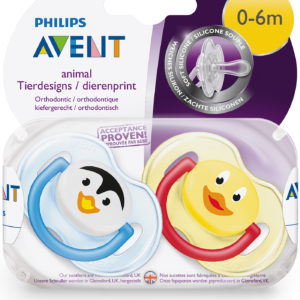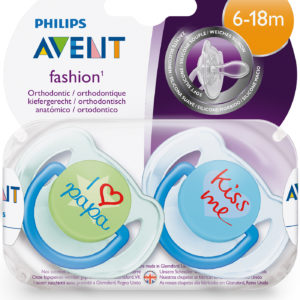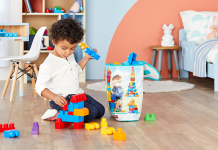Being a new mom can be overwhelming. Even more so when well-intended advice only adds to the confusion. Do this, don’t do that…
When it comes to using pacifiers, a lot of moms aren’t sure what to do. And then there’s the looming thought of getting your little ones to stop using said pacifier in future. What to do?!
According to the experts at Phillips AVENT, soothers might be small in size, but they can still provide a lot of comfort. Here’s how a soother supports your baby as they get to know the world.
Why do babies suckle?
To understand how a soother can support your baby, we first need to delve into why babies suckle. In short: they can’t help it! Babies are born with a natural need to suckle anything that’s placed in their mouths. As your little one grows, this reflex will slowly disappear.
Is all suckling the same?
Believe it or not, not all suckling is the same! There are actually two different types:
Nutritive suckling—suckling that happens as your baby feeds
Non-nutritive suckling—any suckling that doesn’t happen while feeding.
A soother, as you probably guessed, fits into the non-nutritive camp.
So what are the benefits of suckling?
When it comes to nutritive suckling the benefits might seem obvious: your baby is able to draw out milk from a bottle or breast.
There’s also a whole lot more going on behind the scenes. These are the key benefits of both non-nutritive and nutritive suckling that you might not know about:
A content feeling
Ever noticed how your baby becomes sleepy right after a feed? Or feels calm when you offer a soother? This happens because suckling triggers the release of a hormone called CCK (Cholecystokinin). It makes your baby feel full, relaxed, and ready for sleep!
Digestive aid
The other role of CCK is it helps with your little one’s digestion. Breast milk is high in protein and fat and CCK is able to break it down.
Better coordination
Suckling of the non-nutritive kind gives your little one some extra practice coordinating a suckle-swallow-breathe action. These three steps allow your baby to feed effectively from a breast or bottle.
Anything else I should know?
So now that you know suckling and using a soother supports your little one, here are a few extra tips to keep in mind as they grow.
- If you’re struggling to establish breastfeeding, wait a month before offering a soother.
- Because suckling makes your baby feel full and sleepy, it’s best not to offer a soother before a feed.
- For this same reason, it’s best to use a soother right before nap time or after a feed and only as long as your baby needs it.
- Like anything, it’s best not to become too reliant on one thing. As your baby grows, try to vary the kind of comfort you give your little one by offering a cuddle or a toy.
A little bit of comfort goes a long way when you’re getting to know the world. Philips AVENT’s range of orthodontic pacifiers is designed to comfort your baby naturally—every step of the way. Of course, comfort is personal, so you’ll find a wide variety of soother sizes, shape and colours to suit your baby’s unique needs.
All Philips AVENT soothers support natural palate development, are orthodontic and durable and BPA free. Soothers are available in single and twin packs in sizes 0 – 18 months and range from RSP R162, 53 – R214, 61.
Available at Baby City, Toys R Us, Baby Boom, Dis-Chem and Clicks as well as online at www.takelot.com www.babiesrus.co.za and www.babiesafrica.com. Details: www.philips.co.za.












